Abstract
A case control study of drinking water treatment practices and female cancer mortality was conducted in Wisconsin. Cancer deaths for 1972-1977 from 28 Wisconsin counties and noncancer deaths matched to cancer deaths on age, year of death and county of residence, were compared for characteristics of drinking water supplied to their places of residence. Using logistic regression, estimates of relative risk associated with chlorinated water were examined allowing for the influence of indicators of water organics and the potential confounders of occupation, marital status and urbanicity. Only colon cancer appeared to be related significantly to chlorination in all models explored. A dose-response relationship was found between crude indicators of trihalomethane level (chlorination X organic contamination) and colon cancer death. The odds ratio for chlorinated surface water for colon cancer was 2.81 (p less than 0.01); approximately half this risk was found for chlorinated ground water. Consequently, a case control study of colon cancer and drinking water quality utilizing newly diagnosed patients is being conducted in Wisconsin.
Full text
PDF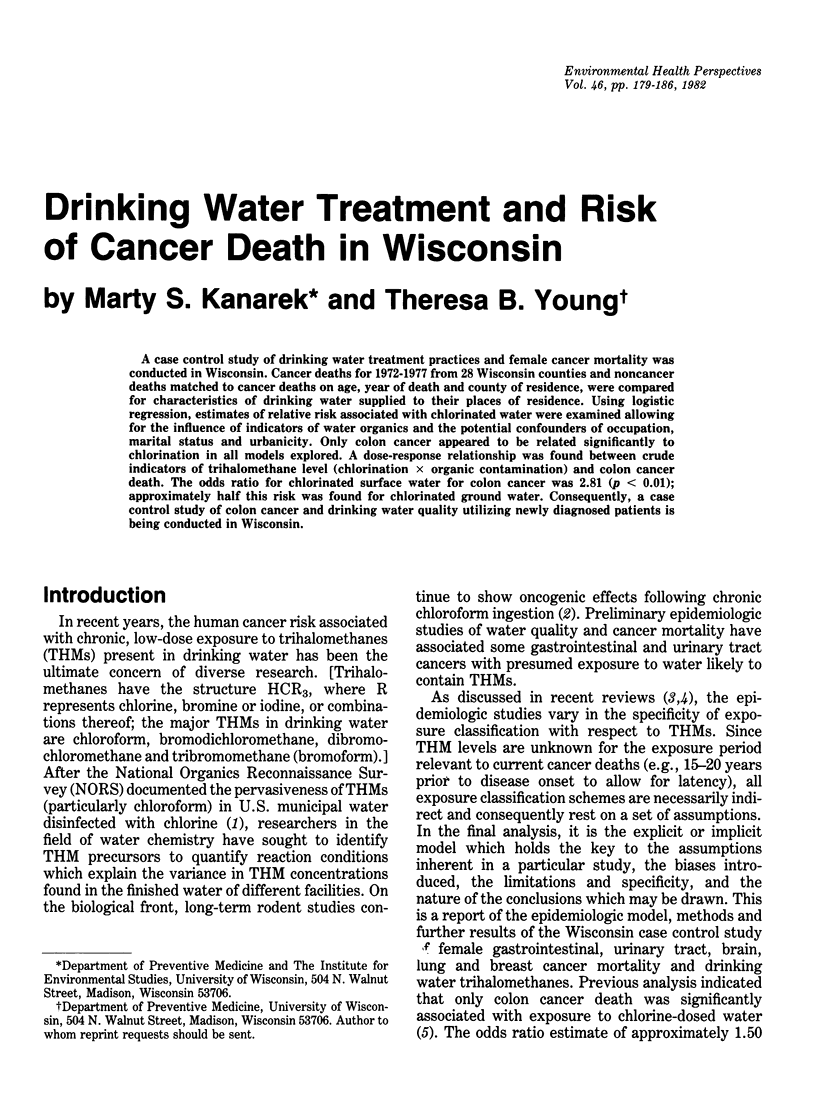
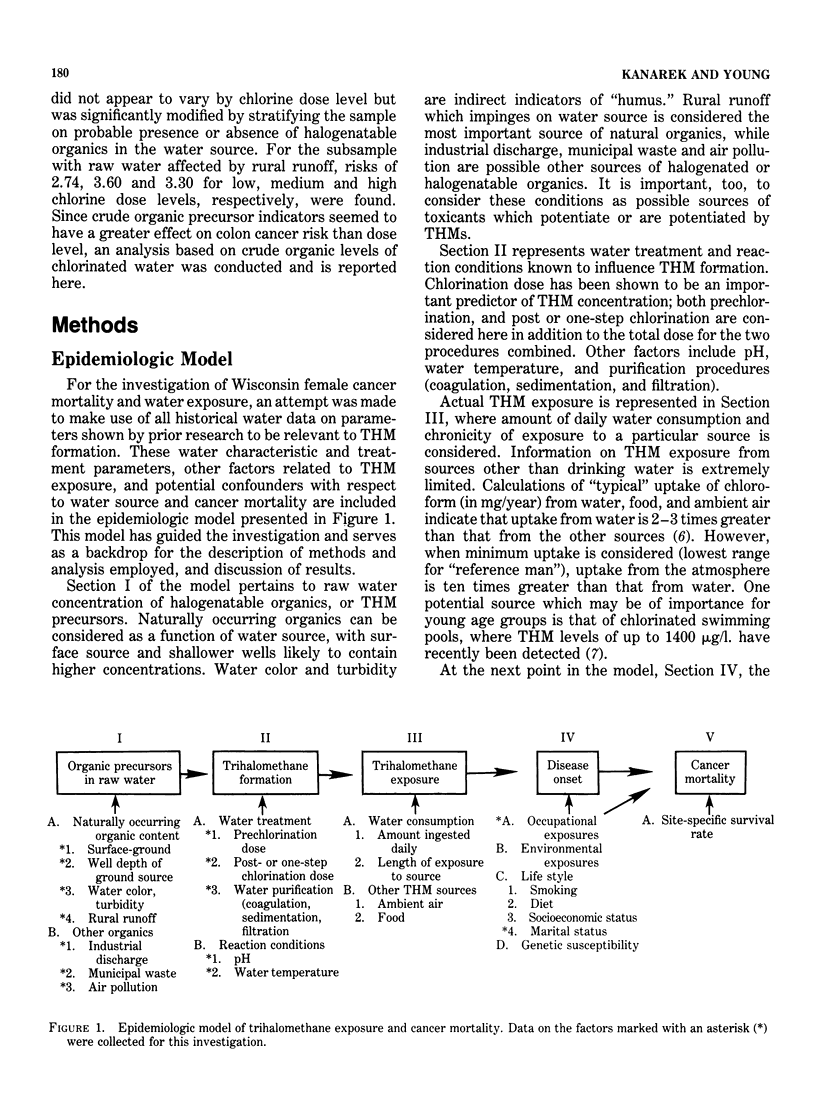
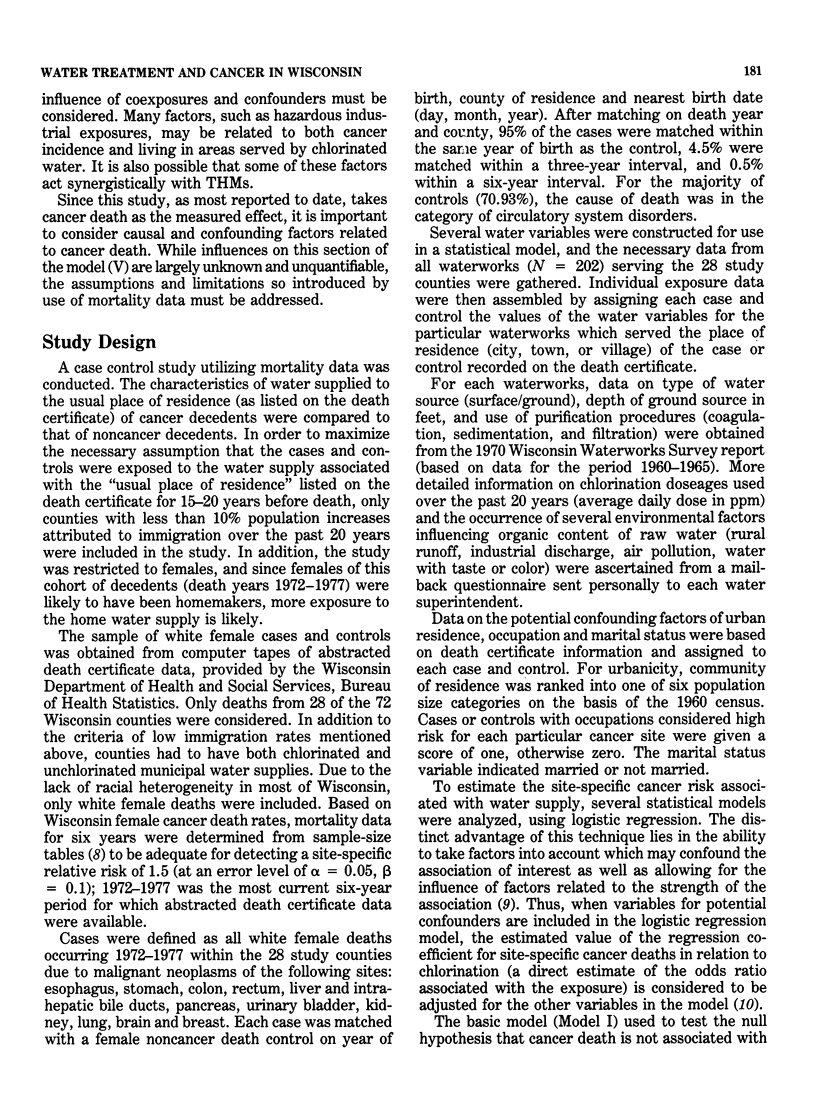
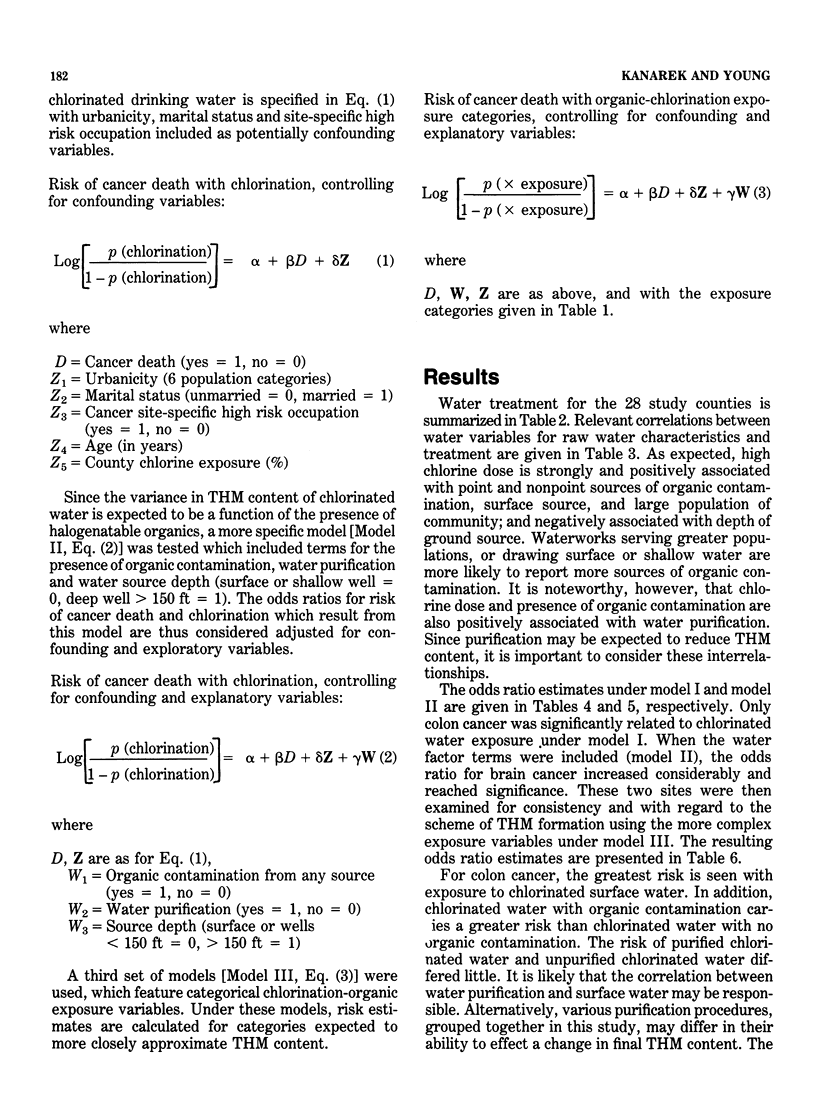
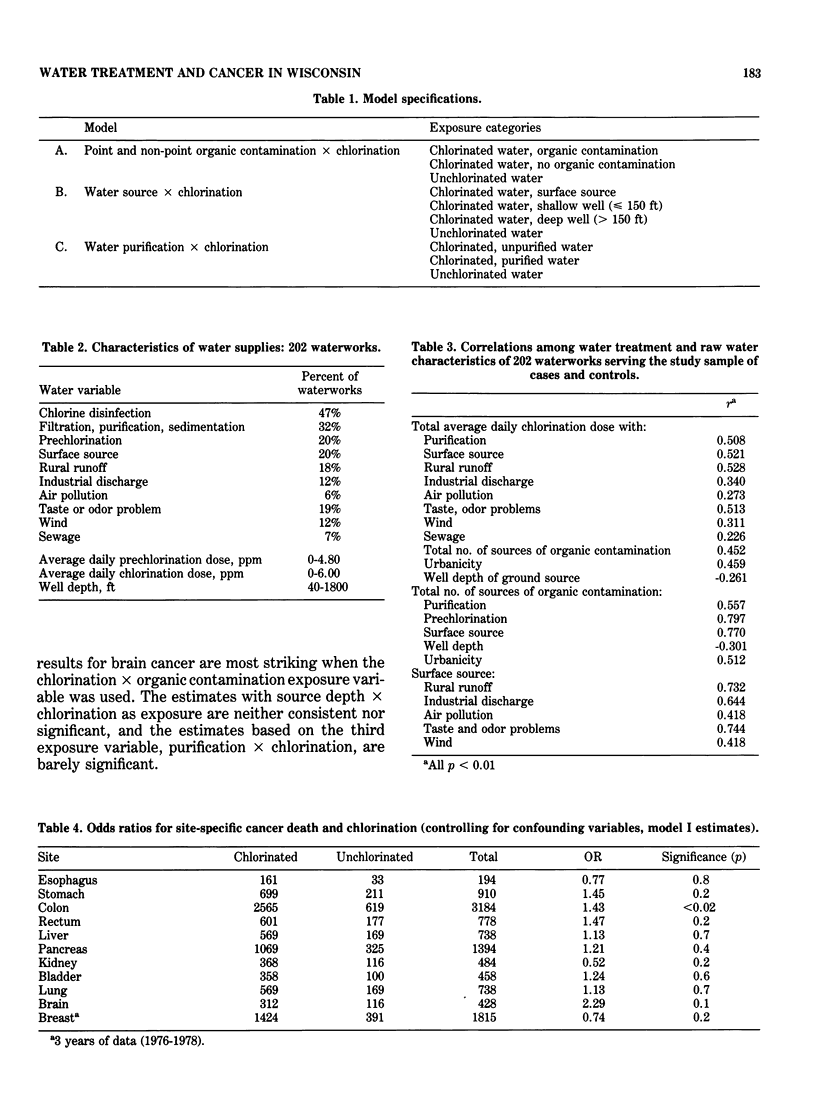
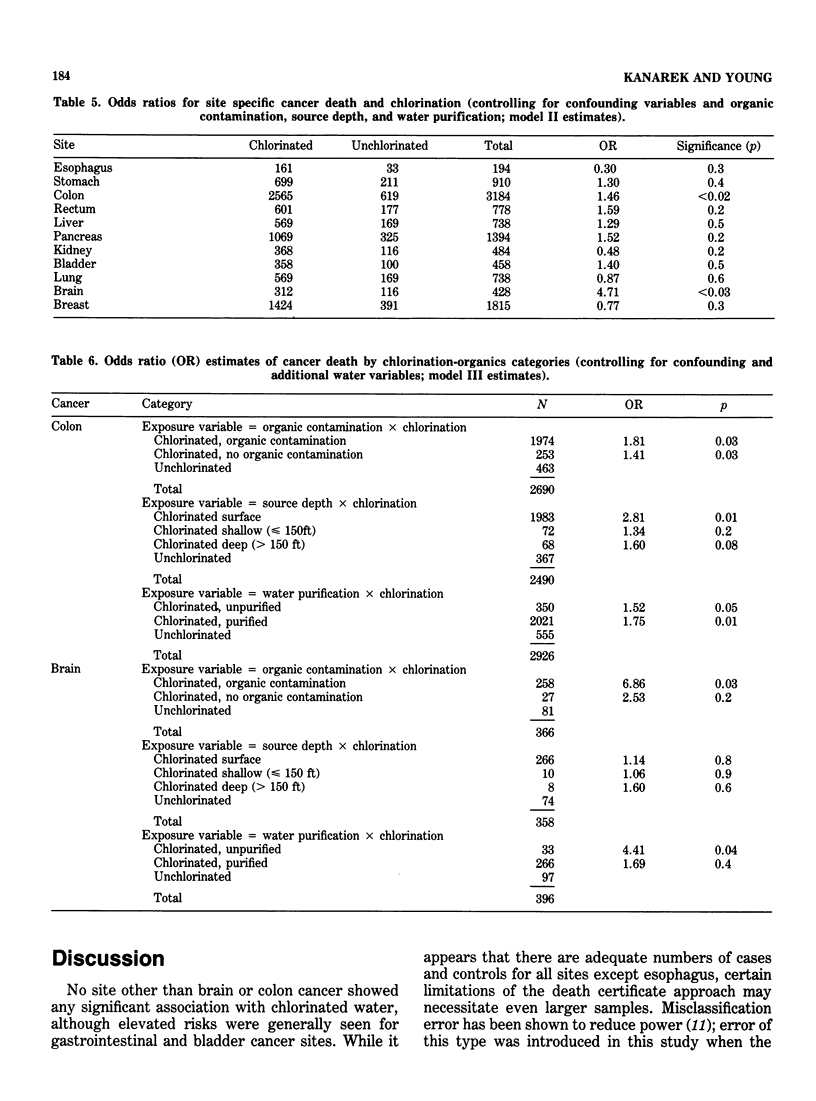
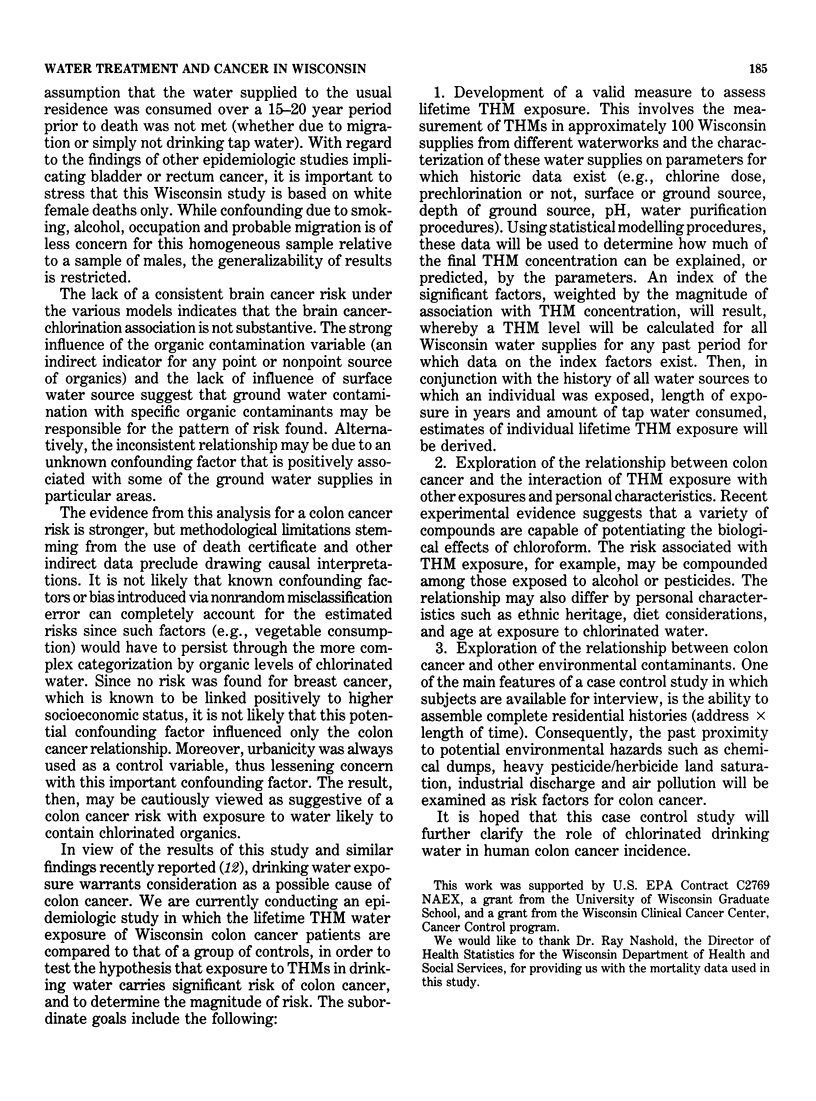

Selected References
These references are in PubMed. This may not be the complete list of references from this article.
- Beech J. A., Diaz R., Ordaz C., Palomeque B. Nitrates, chlorates and trihalomethanes in swimming pool water. Am J Public Health. 1980 Jan;70(1):79–82. doi: 10.2105/ajph.70.1.79. [DOI] [PMC free article] [PubMed] [Google Scholar]
- Gladen B., Rogan W. J. Misclassification and the design of environmental studies. Am J Epidemiol. 1979 May;109(5):607–616. doi: 10.1093/oxfordjournals.aje.a112719. [DOI] [PubMed] [Google Scholar]
- Holford T. R., White C., Kelsey J. L. Multivariate analysis for matched case-control studies. Am J Epidemiol. 1978 Mar;107(3):245–256. doi: 10.1093/oxfordjournals.aje.a112531. [DOI] [PubMed] [Google Scholar]
- Prentice R. Use of the logistic model in retrospective studies. Biometrics. 1976 Sep;32(3):599–606. [PubMed] [Google Scholar]
- Reuber M. D. Carcinogenicity of chloroform. Environ Health Perspect. 1979 Aug;31:171–182. doi: 10.1289/ehp.7931171. [DOI] [PMC free article] [PubMed] [Google Scholar]
- Wilkins J. R., 3rd, Reiches N. A., Kruse C. W. Organic chemical contaminants in drinking water and cancer. Am J Epidemiol. 1979 Oct;110(4):420–448. doi: 10.1093/oxfordjournals.aje.a112825. [DOI] [PubMed] [Google Scholar]
- Young T. B., Kanarek M. S., Tsiatis A. A. Epidemiologic study of drinking water chlorination and Wisconsin female cancer mortality. J Natl Cancer Inst. 1981 Dec;67(6):1191–1198. [PubMed] [Google Scholar]


